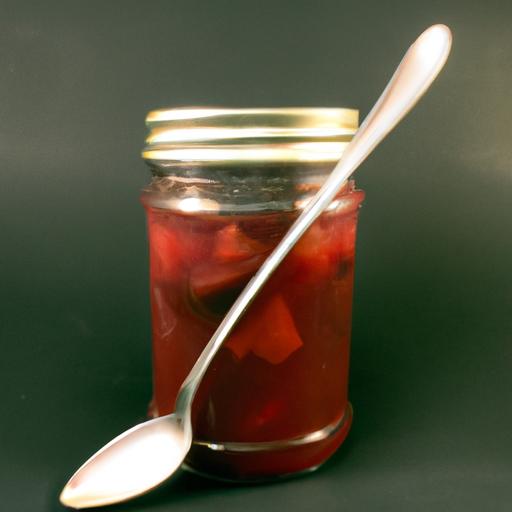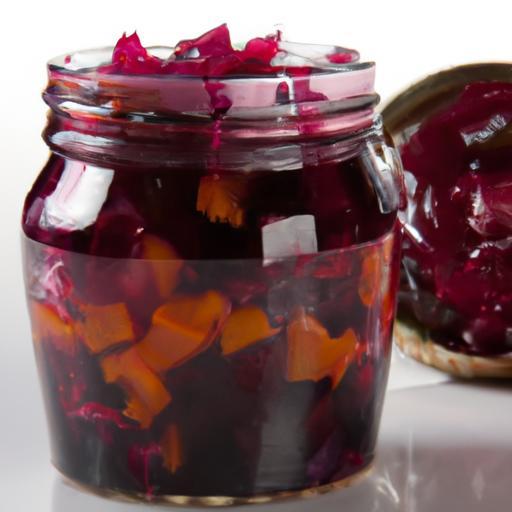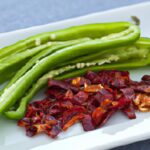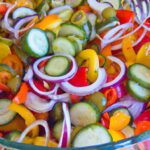There’s something undeniably magical about opening a jar of homemade jam-vivid ruby reds, deep purples, or golden ambers bursting with the promise of sweet, sun-ripened fruit. But what happens when that once-brilliant hue turns pale and muted over time? If you’ve ever wondered why your favorite jam loses its vibrant color in the can, you’re not alone. Color fading in canned jams is more than just a cosmetic quirk; it’s a fascinating dance of chemistry, light, and time. In this article, we’ll peel back the layers behind this subtle transformation, exploring the science that whispers behind the glass jar, and uncover ways to preserve that luscious glow, jar after jar.
The Role of Light and Temperature in Color Preservation
When your jam turns pale, it’s often due to the invisible yet powerful effects of light and temperature. Exposure to sunlight initiates photo-oxidation, a chemical reaction where light penetrates the jam’s pigments, breaking down vibrant anthocyanins and carotenoids that give the fruit its rich, natural color. Similarly, fluctuating or elevated temperatures accelerate enzymatic reactions and degrade color compounds, leading to a dull, faded appearance. Protecting your jam from these elements is essential for preserving that jewel-toned brilliance.
Choosing the Right Ingredients to Maintain Vibrant Hues
Selecting fruits with naturally high pigment content can set your jam up for success. Berries like blackberries, blueberries, and raspberries boast robust anthocyanins that resist fading better than lighter, less pigmented fruits. Incorporating lemon juice not only balances sweetness but adds acidity, stabilizing color by minimizing oxidation. Additionally, using natural pectin-rich fruits or adding quality pectin helps lock in color and texture. Avoid overcooking your jam; gentle simmering preserves delicate pigments and results in a glossy, enticing finish.
Practical Storage Tips to Keep Your Jam Looking Fresh and Bright
Once cooked, proper storage is key to sustaining your jam’s vibrant hues. Store jars in a cool, dark place, such as a pantry or cellar, away from direct sunlight and heat sources. Refrigeration after opening slows down pigment degradation and microbial growth. Choose glass jars with UV-protective coatings or line shelves with opaque materials to reduce light exposure. Finally, airtight seals prevent oxygen from seeping in, safeguarding the jam’s color and flavor integrity for months to come.
Prep and Cook Time
Preparation: 15 minutes
Cooking: 30 minutes
Total: 45 minutes
Yield
About 4 cups (approximately 4-5 half-pint jars)
Difficulty Level
Medium – ideal for home cooks with some canning experience
Ingredients
- 4 cups fresh blackberries, washed
- 2 cups granulated sugar
- 1/4 cup fresh lemon juice
- 1 package powdered pectin (about 1.75 oz)
- 1/2 cup water
- Optional: 1 teaspoon vanilla extract for added depth
Instructions
- Prepare the jars: Sterilize half-pint glass jars and lids by boiling them for 10 minutes. Keep warm until use to prevent cracking.
- Cook the fruit: In a large, heavy-bottomed pot, combine blackberries and water. Gently crush the berries with a potato masher, then bring to a simmer over medium heat to release natural juices.
- Add pectin: Gradually stir in powdered pectin, whisking constantly to avoid lumps. Continue simmering for 1-2 minutes.
- Incorporate sugar and lemon: Slowly add sugar and lemon juice while stirring. High sugar content and acidity help maintain color vibrancy. Bring mixture to a full rolling boil that cannot be stirred down.
- Boil and skim: Maintain a strong boil for 1 minute, stirring frequently to prevent burning. Skim off any foam with a spoon to ensure clarity and color brilliance.
- Optional flavor boost: Remove from heat and stir in vanilla extract for a subtle aromatic enhancement.
- Fill jars: Ladle hot jam into sterile jars, leaving 1/4 inch headspace. Wipe rims clean and seal immediately.
- Process the jars: Process sealed jars in a boiling water bath for 10 minutes to ensure safe preservation and color retention.
- Cool and store: Remove jars carefully and cool on a towel. Store in a dark, cool pantry for optimal freshness and appearance.
Chef’s Notes
- For an even brighter color, consider adding a pinch of lemon zest during cooking.
- If using frozen berries, thaw gently and drain excess liquid to avoid watery jam.
- Overcooking dramatically dulls color – keep boiling times minimal and precise.
- Substitute blackberries with high-pigment alternatives like elderberries or black currants for different flavor profiles.
- To save time, prepare jam in a wide, shallow pan for quicker cooking and enhanced color preservation.
Serving Suggestions
Serve your silky, jewel-toned jam atop freshly toasted sourdough bread, dolloped on creamy vanilla yogurt, or swirled into morning oatmeal. Garnish with fresh mint leaves or a twist of lemon peel to complement the vibrant color and bright acidity. This jam also pairs wonderfully with soft cheeses like brie or goat cheese for an elegant appetizer.
| Nutrient | Per 2 tbsp |
|---|---|
| Calories | 60 |
| Protein | 0.5 g |
| Carbohydrates | 15 g |
| Fat | 0 g |
Learn more about safe canning practices at USDA.
Discover more on preserving fruit color in our in-depth Guide on Preserving Fruit Color.

Q&A
Q&A: When Your Jam Turns Pale – Why Color Fades in Canned Jams
Q1: Why does the vibrant color of my homemade jam fade after I’ve canned it?
A1: That gorgeous hue isn’t just for show-it’s a natural pigment, often from anthocyanins in fruits like berries or plums. When exposed to heat during canning, light, or oxygen, these pigments undergo chemical changes, causing your jam’s lively color to mellow or even turn pale over time.
Q2: Is a faded color a sign that my jam has gone bad?
A2: Not necessarily! Color fading is usually a cosmetic change rather than a safety issue. As long as your jam smells good, tastes fine, and the jar’s seal is intact, it’s safe to eat. Think of it as the jam quietly losing its party dress but still dancing on the taste buds.
Q3: What exactly happens to the pigments during canning?
A3: Heat from boiling water baths or pressure can break down delicate fruit pigments. Anthocyanins, for example, are sensitive to pH changes and heat-acid levels can shift, and heat triggers pigment transformation, dulling the color. Oxygen exposure during filling can also accelerate pigment oxidation, further bleaching the jam.
Q4: Can I prevent my jam from turning pale?
A4: While you can’t stop time, you can slow the fade! Using high-acid fruits or adding a splash of lemon juice helps stabilize color. Minimizing exposure to oxygen by filling jars carefully, processing quickly, and storing jam in a dark, cool place also preserves vibrancy. Remember, less heat and less light = happier pigments.
Q5: Does the type of fruit affect how long the color lasts?
A5: Absolutely! Deep red berries like raspberries or blackberries hold their color somewhat better if acidic. Lighter fruits like peaches or pears naturally have paler pigments that shift more noticeably. Also, fruit freshness and ripeness at canning time influence final color intensity.
Q6: How does storage impact my jam’s color?
A6: Jam is a little like a celebrity under harsh lights-exposure to direct sunlight or fluorescent bulbs can bleach pigments rapidly. Store your jars in a cool, dark pantry or cupboard. The cooler and darker, the better-your jam will thank you by keeping its eye-catching color longer.
Q7: If my jam turns pale, will it still taste the same?
A7: In most cases, yes. Flavor and color don’t always march in lockstep. While some minor flavor shifts may happen, properly canned jam preserves fruit essence well. The taste might even mellow in a pleasant way, like wine aging gracefully-just with less visual drama.
In sum: Pale jam isn’t a tragedy-it’s just nature’s colorful pigments transforming on their preservation journey. With care in canning and storage, you can keep your spreads looking-and tasting-deliciously vibrant for longer. So, don’t fret when pink fades to peach or ruby lessens to rose. Your jam is still a sweet treasure!
To Conclude
As we peel back the lid on the mystery of fading jam colors, it becomes clear that the vibrant hues we cherish are a delicate dance of nature and science. From light exposure to heat, and the subtle chemistry of fruit pigments, every factor plays its part in the gradual mellowing of your favorite spread. So next time your jam turns pale, remember-it’s not a sign of spoilage but a testament to the complex journey from orchard to jar. Embrace the softer shade, savor the sweet taste, and appreciate the science behind every spoonful. After all, color may fade, but the joy of homemade jam is forever.


